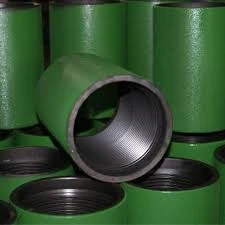- Afrikaans
- Albanian
- Amharic
- Arabic
- Armenian
- Azerbaijani
- Basque
- Belarusian
- Bengali
- Bosnian
- Bulgarian
- Catalan
- Cebuano
- Corsican
- Croatian
- Czech
- Danish
- Dutch
- English
- Esperanto
- Estonian
- Finnish
- French
- Frisian
- Galician
- Georgian
- German
- Greek
- Gujarati
- Haitian Creole
- hausa
- hawaiian
- Hebrew
- Hindi
- Miao
- Hungarian
- Icelandic
- igbo
- Indonesian
- irish
- Italian
- Japanese
- Javanese
- Kannada
- kazakh
- Khmer
- Rwandese
- Korean
- Kurdish
- Kyrgyz
- Lao
- Latin
- Latvian
- Lithuanian
- Luxembourgish
- Macedonian
- Malgashi
- Malay
- Malayalam
- Maltese
- Maori
- Marathi
- Mongolian
- Myanmar
- Nepali
- Norwegian
- Norwegian
- Occitan
- Pashto
- Persian
- Polish
- Portuguese
- Punjabi
- Romanian
- Russian
- Samoan
- Scottish Gaelic
- Serbian
- Sesotho
- Shona
- Sindhi
- Sinhala
- Slovak
- Slovenian
- Somali
- Spanish
- Sundanese
- Swahili
- Swedish
- Tagalog
- Tajik
- Tamil
- Tatar
- Telugu
- Thai
- Turkish
- Turkmen
- Ukrainian
- Urdu
- Uighur
- Uzbek
- Vietnamese
- Welsh
- Bantu
- Yiddish
- Yoruba
- Zulu
Understanding Connections in Casing and Tubing Systems for Enhanced Oil Extraction Efficiency
Casing and Tubing Connections An Overview
In the realm of oil and gas drilling, the integrity and functionality of casing and tubing connections are paramount. These connections not only serve as conduits for hydrocarbons but also provide structural support for the wellbore, ensuring safety and operational efficiency. Understanding the various types of connections, their design, and their applications can help maximize productivity and minimize risks.
What Are Casing and Tubing Connections?
Casing refers to the steel pipes that are installed in the wellbore during the drilling process. They play a critical role in stabilizing the well, preventing collapses, and isolating water-bearing formations from hydrocarbon zones. Tubing, on the other hand, is the conduit through which oil and gas flow to the surface. The connections between casing and tubing must be robust and reliable to withstand extreme pressures and corrosive environments found deep within the Earth's crust.
Types of Connections
Casing and tubing connections can be categorized into two main types threaded and welded connections
.1. Threaded Connections This type is the most common due to its ease of installation and removal. Threaded connections consist of male and female threads that fit together, creating a seal that can withstand substantial pressures. Various standards such as API (American Petroleum Institute) have defined specifications for these threads, ensuring compatibility and performance across different manufacturers. A notable advantage of threaded connections is that they can be easily disassembled, allowing for maintenance or replacement of sections of the casing or tubing.
2. Welded Connections In environments where higher strength and integrity are required, welded connections might be preferred. These connections involve welding the casing or tubing together, which creates a seamless bond that can handle higher pressures and temperatures. While they may be more labor-intensive and time-consuming to install, the durability of welded connections can be advantageous in specific applications, such as in deepwater drilling where conditions are extreme.
casing and tubing connections

Importance of Sealing
A critical aspect of casing and tubing connections is the ability to create an effective seal. Failure to properly seal these connections can lead to leaks, blowouts, and catastrophic failures, jeopardizing the safety of personnel and equipment. Various sealing mechanisms, such as O-rings or mechanical seals, can be integrated into the design of the connections to enhance their integrity. Regular inspections and maintenance are essential to identify wear and tear that could compromise these seals.
Challenges and Innovations
Casing and tubing connections are not without their challenges. The harsh conditions in which these connections operate—high pressures, corrosive fluids, and abrasive materials—can lead to degradation over time. New materials and coating technologies are being developed to prolong the life of these connections and improve their resistance to corrosion and wear.
Furthermore, advancements in connection technology, such as hybrid connections that combine the benefits of both threaded and welded types, are emerging. These innovations aim to enhance performance while reducing the risk of failure.
Conclusion
In summary, casing and tubing connections are crucial components of oil and gas drilling operations. Their design, material, and sealing capability directly influence the efficiency and safety of drilling projects. As the industry continues to evolve with technological advancements, ongoing research into improving the reliability and durability of these connections will be vital in addressing the challenges of modern drilling operations. Understanding the intricacies of casing and tubing connections is essential for engineers and operators in ensuring the success of their drilling endeavors.
-
Tubing Pup Joints: Essential Components for Oil and Gas OperationsNewsJul.10,2025
-
Pup Joints: Essential Components for Reliable Drilling OperationsNewsJul.10,2025
-
Pipe Couplings: Connecting Your World EfficientlyNewsJul.10,2025
-
Mastering Oilfield Operations with Quality Tubing and CasingNewsJul.10,2025
-
High-Quality Casing Couplings for Every NeedNewsJul.10,2025
-
Boost Your Drilling Efficiency with Premium Crossover Tools & Seating NipplesNewsJul.10,2025







